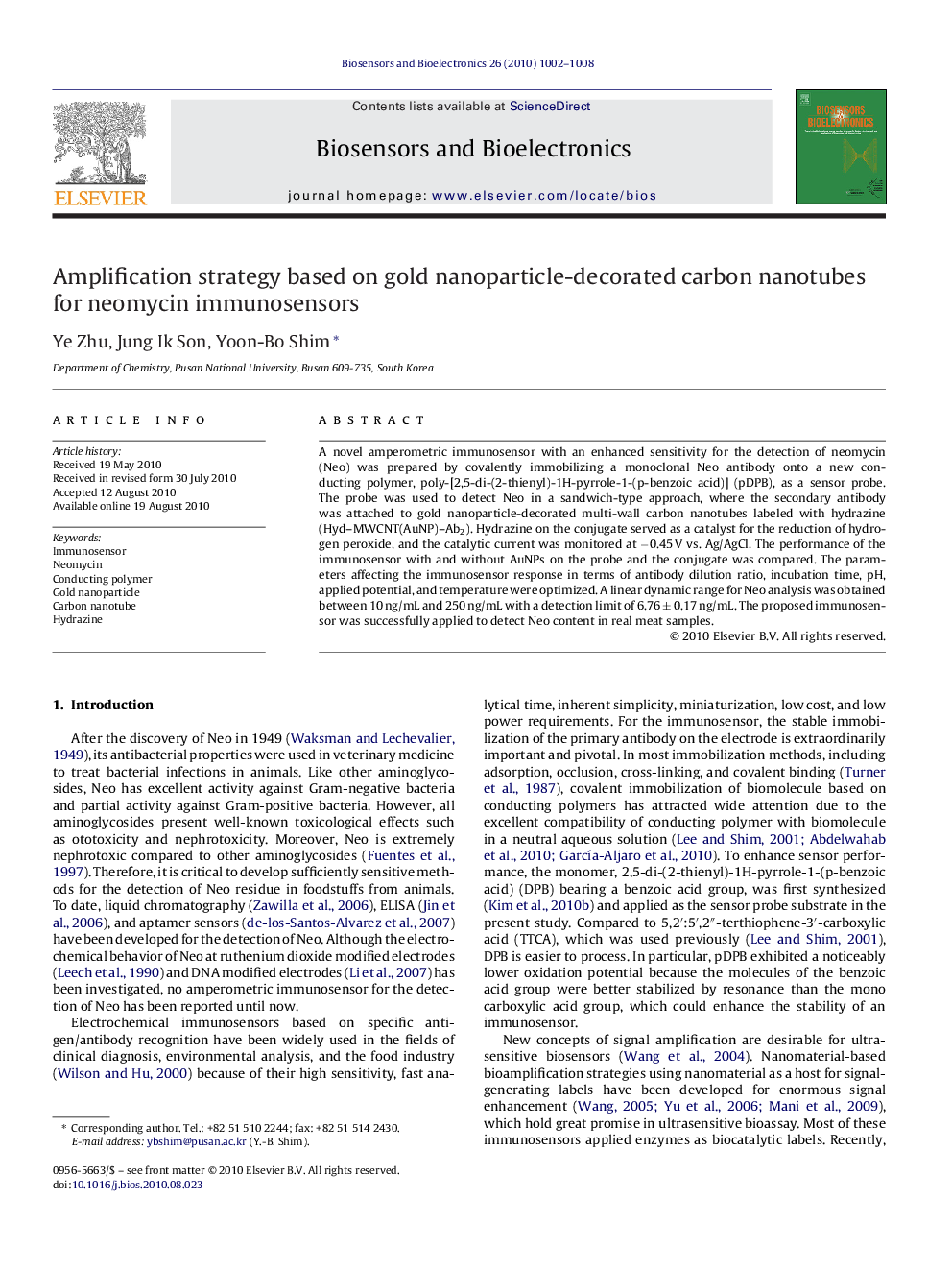| Article ID | Journal | Published Year | Pages | File Type |
|---|---|---|---|---|
| 867901 | Biosensors and Bioelectronics | 2010 | 7 Pages |
A novel amperometric immunosensor with an enhanced sensitivity for the detection of neomycin (Neo) was prepared by covalently immobilizing a monoclonal Neo antibody onto a new conducting polymer, poly-[2,5-di-(2-thienyl)-1H-pyrrole-1-(p-benzoic acid)] (pDPB), as a sensor probe. The probe was used to detect Neo in a sandwich-type approach, where the secondary antibody was attached to gold nanoparticle-decorated multi-wall carbon nanotubes labeled with hydrazine (Hyd–MWCNT(AuNP)–Ab2). Hydrazine on the conjugate served as a catalyst for the reduction of hydrogen peroxide, and the catalytic current was monitored at −0.45 V vs. Ag/AgCl. The performance of the immunosensor with and without AuNPs on the probe and the conjugate was compared. The parameters affecting the immunosensor response in terms of antibody dilution ratio, incubation time, pH, applied potential, and temperature were optimized. A linear dynamic range for Neo analysis was obtained between 10 ng/mL and 250 ng/mL with a detection limit of 6.76 ± 0.17 ng/mL. The proposed immunosensor was successfully applied to detect Neo content in real meat samples.
